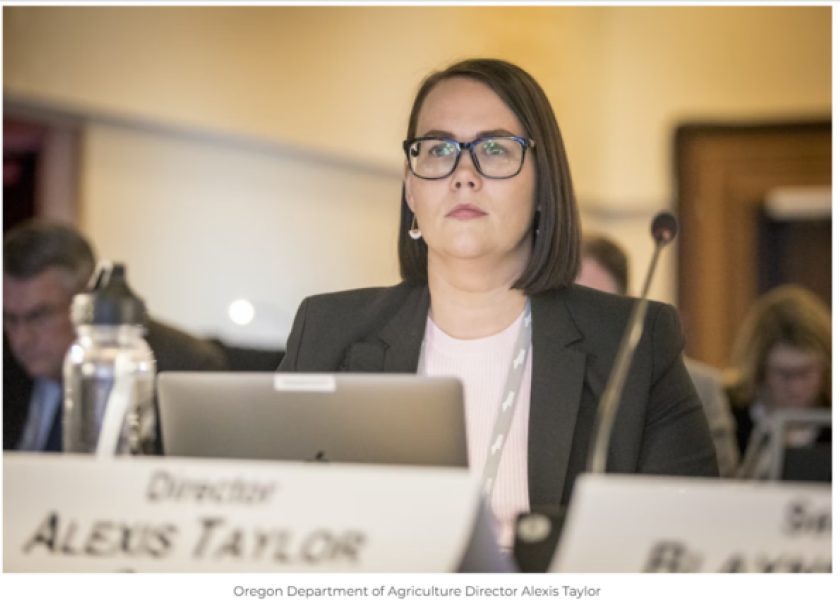Senate Confirms Alexis Taylor as USDA Trade Under Secretary

The Senate on Wednesday confirmed Alexis Taylor for the role of Under Secretary of Agriculture for Trade and Foreign Agricultural Affairs.
Background
An Iowa farm native, Taylor went on to serve in the U.S. Army Reserves before taking office as Oregon's Department of Ag director since 2016. She also served on the 2020-2021 NASDA Board of Directors to sharpening states’ impact on federal ag policy.
In a Sept. hearing with the Senate Ag Committee, Taylor outlined her past positions and laid-out her main priorities, if confirmed for the role:
1. Food insecurity
2. Strengthen export markets
3. Expand market opportunities
What They're Saying
Following the appointment of her as trade under secretary, Senate Ag Committee emphasized the "invaluable" role Taylor will play for USDA, farmers and rural communities in a press release.
“I am confident she will work to increase export market access for our farmers and ranchers while working to ensure our international partners abide by the spirit of our existing trade agreements,” said Ranking Member John Boozman (R-Ark.).
Chairwoman Debbie Stabenow (D-Mich.) echoed Boozman, saying Taylor is a "dedicated" public servant.
"Throughout this process, she has proven that she understands trade and agriculture and will be an invaluable asset to USDA as they help farmers and rural communities recover from the pandemic,” she said.
Ted McKinney, NASDA CEO, penned a letter in support of Taylor's nomination prior to her taking the role. In the letter, McKinney underscored Taylors work in expanding market opportunities not only for Oregonians but for farmers and ranchers across the country.
“Alexis’ work as Under Secretary of Agriculture for Trade and Foreign Agricultural Affairs is needed now more than ever as increasing trade is an important element to alleviating supply chain challenges and curbing inflation. We know her efforts are sure to have a meaningful impact on consumers and families nationwide," said NASDA CEO Ted McKinney.
Two More Confirmations to Come
The nominations of Jose Emilio to be USDA undersecretary for food safety and Doug McKalip to be the chief agricultural negotiator at the Office of the U.S. Trade Representative are still pending as holds remain on their nominations.
Signals surfaced they are likely to be lifted and cleared by the Senate before the end of the year.
More on policy:
USMCA as a Framework: New Talks Between U.S., Ecuador, Uruguay
Ag Commodities Transformed into New Bioproducts







